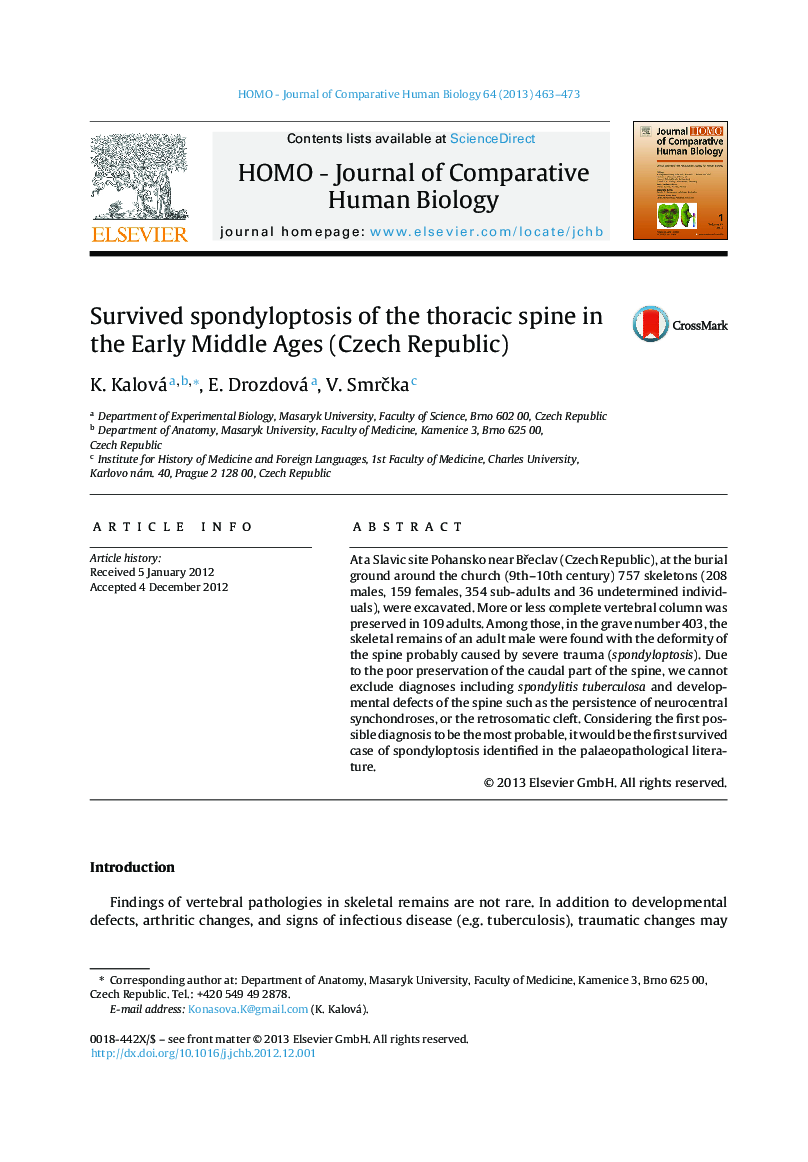| Article ID | Journal | Published Year | Pages | File Type |
|---|---|---|---|---|
| 100312 | HOMO - Journal of Comparative Human Biology | 2013 | 11 Pages |
At a Slavic site Pohansko near Břeclav (Czech Republic), at the burial ground around the church (9th–10th century) 757 skeletons (208 males, 159 females, 354 sub-adults and 36 undetermined individuals), were excavated. More or less complete vertebral column was preserved in 109 adults. Among those, in the grave number 403, the skeletal remains of an adult male were found with the deformity of the spine probably caused by severe trauma (spondyloptosis). Due to the poor preservation of the caudal part of the spine, we cannot exclude diagnoses including spondylitis tuberculosa and developmental defects of the spine such as the persistence of neurocentral synchondroses, or the retrosomatic cleft. Considering the first possible diagnosis to be the most probable, it would be the first survived case of spondyloptosis identified in the palaeopathological literature.
